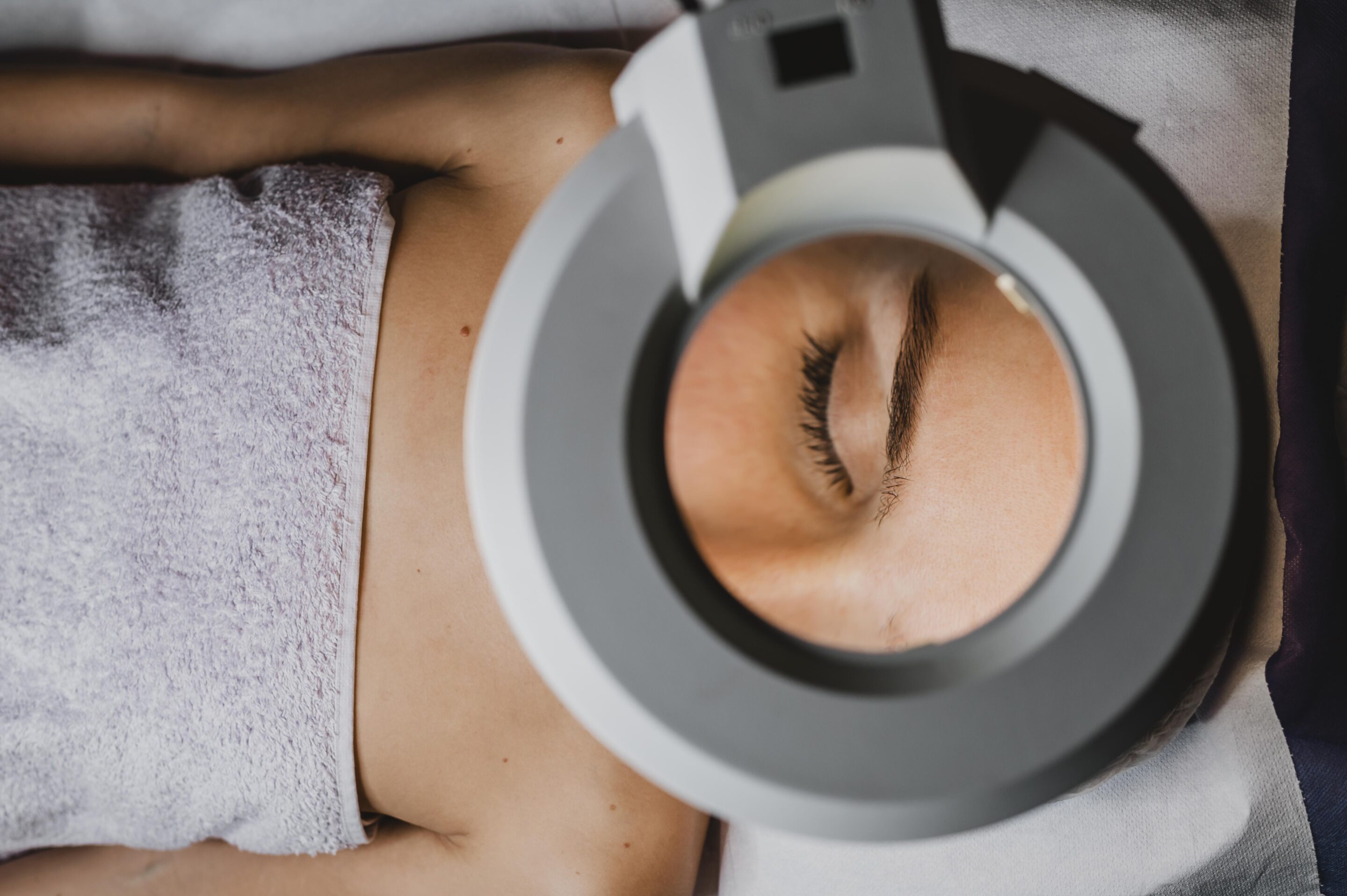If you’re considering Intense Pulsed Light (IPL) therapy, one of the most common questions you’ll encounter is: “How Often Can You Do IPL?”
The answer might surprise you, especially if you’ve been quoted packages of 4, 6 or even 8 sessions upfront. Let’s break down what you really need to know about IPL treatment frequency.
The Truth About Large Treatment Packages
Many clinics push large IPL packages, but here’s what they often don’t tell you: when IPL is performed at appropriately strong settings (safely and professionally), you typically don’t need as many treatments as these providers suggest.
The reason some clinics recommend numerous sessions often has more to do with business models than medical necessity. They are often simply trying to boost sales. When treatments are performed at conservative, lower settings, it can take many more sessions to achieve visible results. However, when a skilled practitioner uses optimal energy levels tailored to your skin type and concerns, you can achieve excellent results in far fewer treatments.
This doesn’t mean aggressive is always better. The key is finding that sweet spot where the treatment is strong enough to be effective, but still completely safe for your skin type and condition.
Safe Treatment Frequency: What the Science Says
For most skin concerns treated with IPL, including sun damage, age spots, broken capillaries, and overall skin rejuvenation, a typical protocol looks like this:
Initial Treatment Phase:
– Treatments spaced 4-6 weeks apart
– Usually 1-3 sessions total for optimal results
– Some concerns may resolve in even fewer treatments when appropriate settings are used
The 4-6 week spacing is important because it allows your skin adequate time to heal, shed damaged cells, and reveal the improvements from the previous treatment. Rushing treatments too close together doesn’t give your skin the recovery time it needs and won’t necessarily speed up your results.
The Role of Proper Skincare in Reducing Treatment Frequency
Here’s where many people can save themselves time and money: proper skincare maintenance can significantly extend the time between IPL treatments, or even eliminate the need for frequent touch-ups altogether.
Important maintenance ingredients include:
Mineral SPF: This is non-negotiable. Sun exposure is the primary cause of the pigmentation and vascular issues that IPL treats. Daily broad-spectrum mineral sunscreen (SPF 30 or higher) protects your results and prevents new damage from forming.
Retinol: A vitamin A derivative that increases cell turnover, improves skin texture, and helps prevent new pigmentation issues. It’s like a maintenance crew for your skin, keeping it healthy between treatments. Retinol also helps with acne, pores and over time, even fine lines and texture.
Vitamin C: A powerful antioxidant that brightens skin, protects against environmental damage, and supports collagen production. It works synergistically with your sunscreen to prevent future sun damage. Make sure the Vitamin C is medical grade and good quality, drug store vitamin C serums rarely are high enough quality or high enough quantity of Vitamin C to be effective.
When you commit to this skincare trinity—mineral SPF, retinol, and vitamin C—you’re actively maintaining your IPL results. This means you may only need a touch-up treatment once every 1-2 years, if at all, depending on your lifestyle and sun exposure.
The Rosacea Exception
Rosacea patients are a special case when it comes to IPL maintenance. While IPL can be incredibly effective at reducing the redness and visible blood vessels associated with rosacea, this condition is chronic and influenced by numerous triggers.
For rosacea patients:
– Annual touch-up treatments are often beneficial
– Results can last longer with proper trigger management
– Avoiding alcohol, spicy and unhealthy foods, extreme temperatures, and stress can extend treatment results
– A consistent skincare routine is even more critical
The good news is that even with annual maintenance, you’re looking at approximately one treatment per year, not the multiple sessions some clinics might suggest. And if you’re diligent about managing your rosacea triggers—limiting alcohol consumption, eating an anti-inflammatory diet, and protecting your skin from environmental stressors—you may find you can stretch treatments even further.
Questions to Ask Your Technician
When considering IPL treatments, don’t be afraid to ask:
– Why are you recommending this specific number of treatments?
– What results can I realistically expect per session?
– Do you have before and after photos of someone with similar skin to mine?
– What skincare routine do you recommend to maintain my results?
– How often do your patients typically need touch-ups?
A reputable practitioner will be transparent about their approach and happy to explain their reasoning. They should be focused on getting you results efficiently and safely, not on selling you the largest package possible.
Quality over quantity is the name of the game with IPL. When treatments are performed at appropriate settings by a skilled practitioner, you should see significant improvement in 1-3 sessions, not 4-8. Combine that with a solid skincare routine featuring mineral SPF, retinol, and vitamin C, and you’re setting yourself up for long-lasting results with minimal maintenance.
For most concerns, you shouldn’t need frequent ongoing treatments. Rosacea patients may benefit from annual touch-ups, especially when combined with trigger management. The key is finding a provider who prioritizes your results and skin health over package sales.
Your skin is an investment, but that investment should be in quality treatments and quality skincare, not an endless cycle of sessions you may not actually need.
FAQ
How long should I wait between IPL treatments in Calgary?
At Elysian Laser Aesthetics in Calgary, we recommend spacing IPL photofacial treatments 4-6 weeks apart. This timeframe allows your skin to complete its natural healing and renewal cycle after treatment. Here’s why timing matters: after IPL, your skin needs time for dark spots to darken, flake off, and reveal clear skin underneath (typically 7-14 days), then additional weeks for deeper regeneration and healing to occur. Treating too soon can overwhelm your skin and increase risk of complications. For our Calgary clients at our Mahogany clinic, we schedule follow-up appointments based on your individual skin response—some clients with sensitive skin may need 6-8 weeks between sessions, while others can safely treat every 3-4 weeks. We never rush treatments just to sell more sessions; proper spacing ensures safe, optimal results.
Can I do IPL every month in Calgary?
Yes, IPL treatments can be safely performed every 4-6 weeks (roughly monthly) at Elysian Laser Aesthetics in Calgary, as long as your skin has fully healed from the previous session. Monthly IPL is safe for most clients when proper healing time is respected. However, we assess your skin before each treatment to ensure it’s ready—if you still have active peeling, significant redness, or residual sensitivity, we’ll recommend waiting an additional 1-2 weeks. Calgary’s dry climate can sometimes slow healing, so hydration and proper aftercare are essential between treatments at our SE Calgary clinic. Most clients complete their IPL series (2-3 treatments) over 3-5 months when spacing sessions appropriately. Never let a clinic pressure you into more frequent treatments than your skin can handle safely.
How often should I get IPL maintenance treatments in Calgary?
After completing your initial IPL series at Elysian Laser Aesthetics in Calgary, most clients benefit from maintenance treatments every 1-2 years to keep their skin looking clear and even-toned. The frequency of maintenance IPL depends on several factors: your age, lifestyle, sun exposure habits, and how well you protect your skin daily. Calgary residents who spend time outdoors year-round (hiking, skiing, golfing) may notice new sun damage developing faster and might choose annual maintenance IPL. Those who are diligent with mineral sunscreen and avoid sun exposure may go 2-4 years between touch-up treatments. At our Mahogany location, we don’t push unnecessary maintenance—we’ll only recommend a touch-up when we see new pigmentation, redness, or sun damage developing. Think of IPL maintenance like servicing your car: regular check-ins help you catch issues early before they become major concerns.




